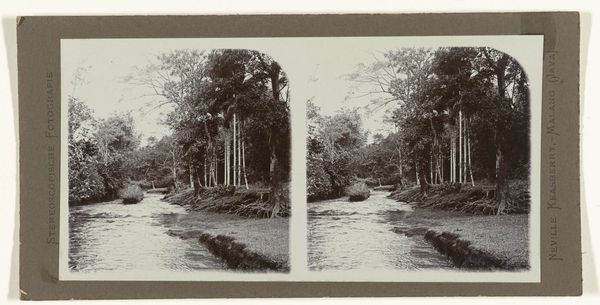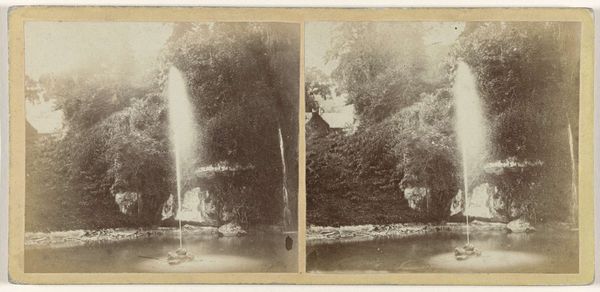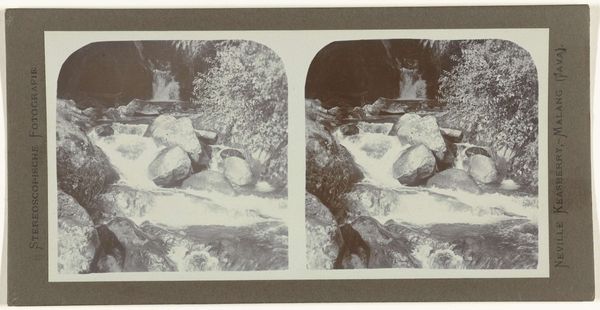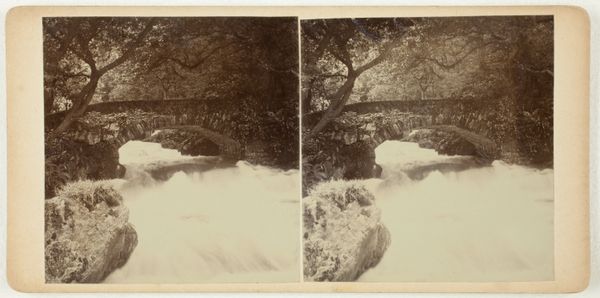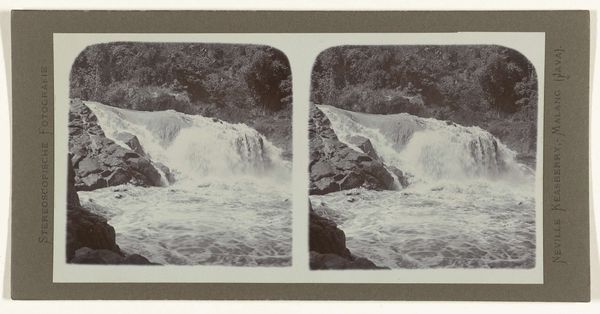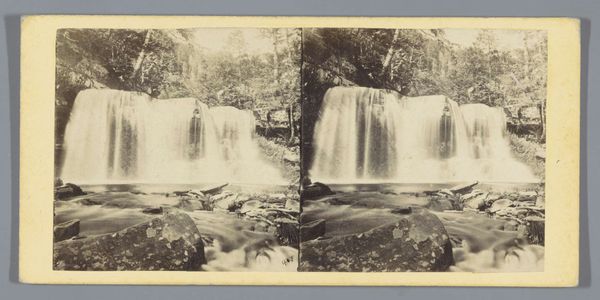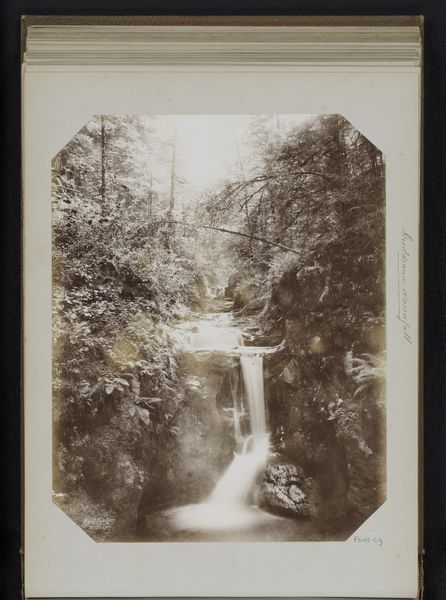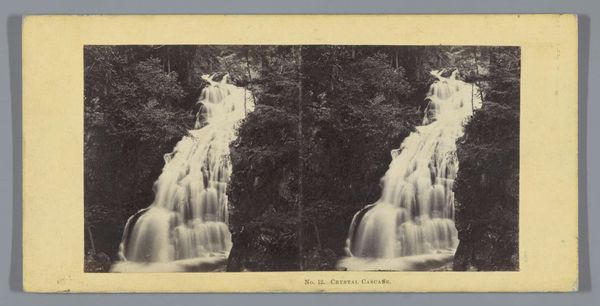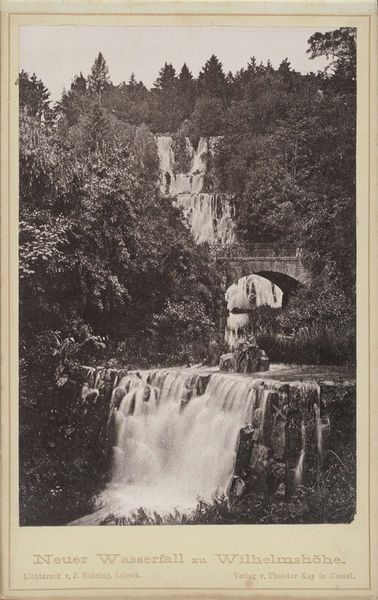
photography, gelatin-silver-print
#
pictorialism
#
landscape
#
photography
#
gelatin-silver-print
Dimensions: height 76 mm, width 152 mm
Copyright: Rijks Museum: Open Domain
Curator: Standing before us is a photograph titled "Watervallen in een rivier nabij Malang," or "Waterfalls in a River Near Malang," taken by Neville Keasberry sometime between 1900 and 1935. It’s a gelatin-silver print rendered in a subdued palette. Editor: Immediately, I’m struck by how meticulously the texture of the water and surrounding foliage is rendered. It's a landscape captured in sharp focus; you can practically feel the dampness in the air. Curator: Indeed. The composition is masterfully constructed, wouldn’t you agree? Observe how the cascading waterfalls create a vertical rhythm that’s beautifully balanced by the horizontal layers of trees and rock formations. Note that it conforms with the style of Pictorialism in the way that imitates an expressive painting. Editor: I agree. But I’m drawn to think about the effort involved in creating this image. Imagine the labor it took to haul the equipment, prepare the gelatin-silver emulsion, and develop the print under primitive darkroom conditions in that region of Java. Curator: The very materials serve the aesthetic function, one could argue. The tonal range, inherent in the gelatin-silver process, is central to the photograph's impact, conveying the humidity and light so effectively. The materiality serves the expressive elements in the overall structure. Editor: I’d expand that slightly. Beyond mere technical considerations, the colonial context undoubtedly shaped both the availability of materials and the artist’s subject. Waterfalls and landscapes served as potent symbols of the "exotic" for European consumption. Curator: An astute observation! It is a rich blend of aesthetic design principles coupled with a material rendering. Considering the date, its a fascinating representation that melds style, substance, and sociohistorical narratives, a dense and complex layering that warrants further exploration. Editor: Yes. Considering that production within a specific place and time certainly shapes not only what we see, but how we interpret it today, the interplay between the hand of the artist, nature's grandeur, and colonialism, is palpable and unavoidable.
Comments
No comments
Be the first to comment and join the conversation on the ultimate creative platform.
